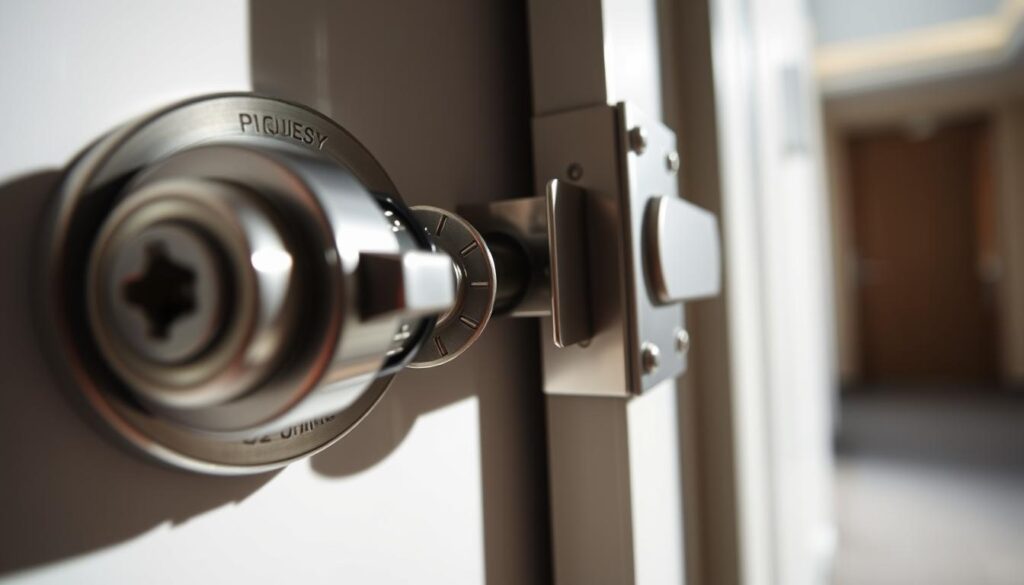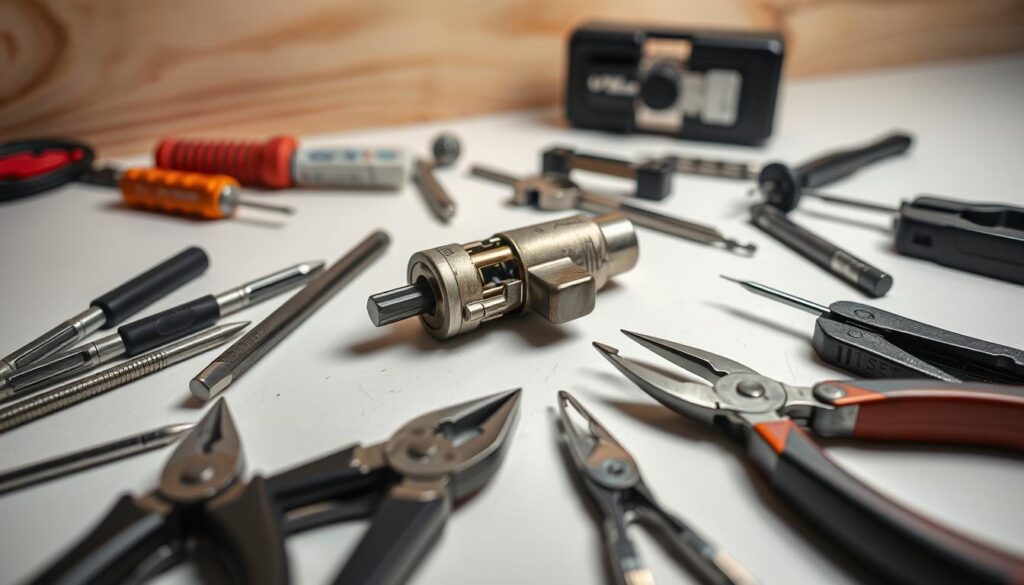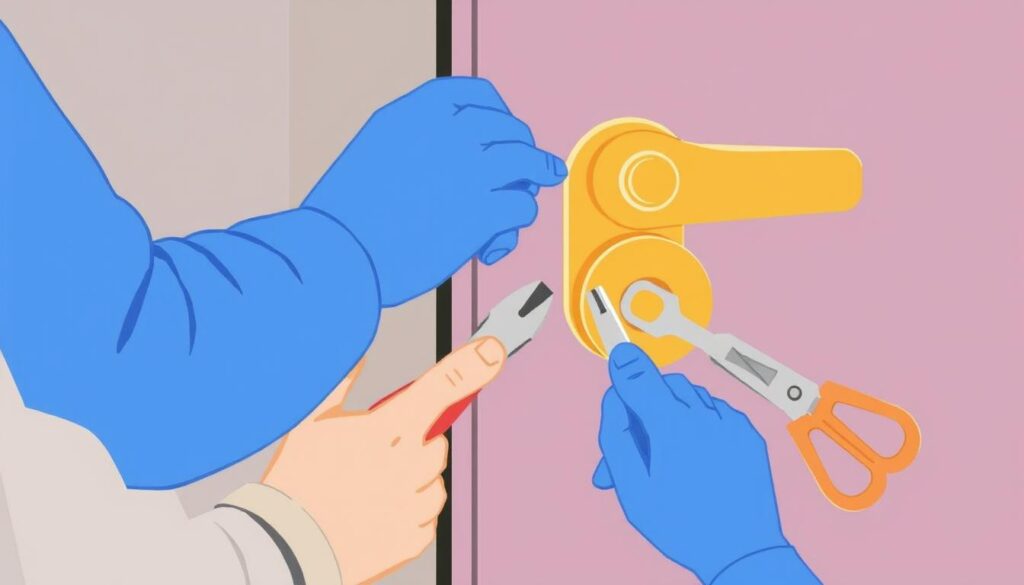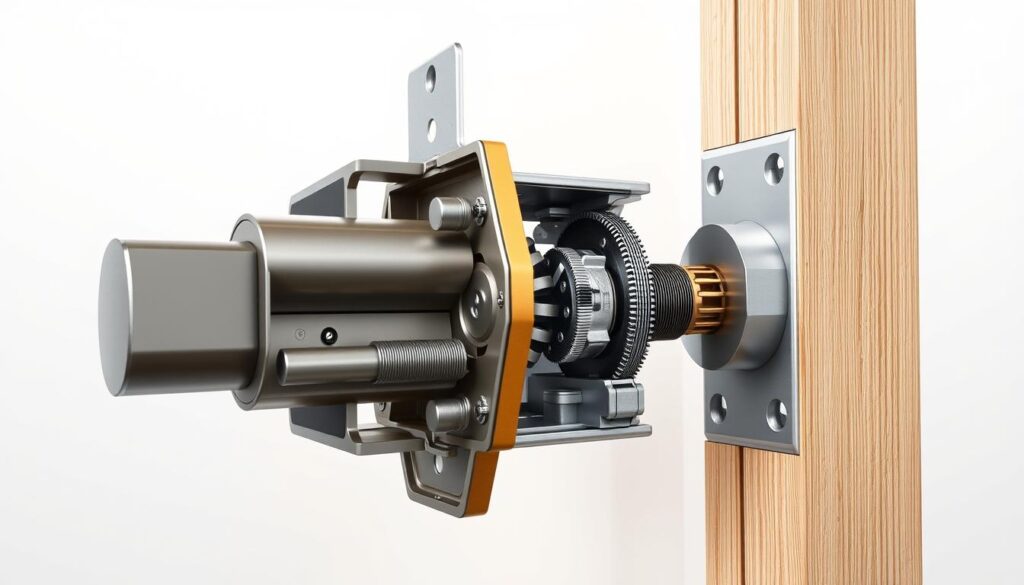Multipoint door locks are a sophisticated locking system used in modern doors, especially those with uPVC or composite construction. When they malfunction, it can be a significant inconvenience.
Understanding how to diagnose and fix these issues is crucial for maintaining the security and energy efficiency of your home. In this article, we’ll explore the structure and function of multipoint door locks and provide step-by-step instructions for various repair techniques.
Key Takeaways
- Diagnose common issues with your multipoint door lock
- Understand the structure and function of multipoint locking systems
- Learn simple lubrication techniques to resolve sticking issues
- Discover adjustment methods for misaligned locking mechanisms
- Improve the security and energy efficiency of your home
Understanding Multipoint Door Locks
Multipoint door locks are a significant upgrade over traditional single-point locks, offering enhanced security and stability. They distribute the force of attempted break-ins across multiple locking points, making it more difficult for intruders to force the door open.
What Are Multipoint Door Locks?
Multipoint door locks secure the door at multiple points along the frame, differing significantly from traditional single-point locks. This locking system is particularly beneficial for uPVC, composite, and timber doors.

How Multipoint Locking Systems Work
When you turn the handle or cylinder, it activates the internal mechanism, extending or retracting the locking points simultaneously. This operation is typically controlled by a single handle or cylinder mechanism.
Common Components of Multipoint Locks
The internal components include the central gearbox, locking points (hooks, bolts, or rollers), keeps, strike plates, and the cylinder mechanism. Understanding these components is crucial for maintaining and repairing your multipoint door lock.
Common Causes of Sticking Multipoint Door Locks
When your multipoint door lock sticks, it’s often due to one of several underlying issues that need to be addressed. Understanding the root cause is crucial to resolving the problem effectively.
Misalignment Issues
Misalignment is a common cause of sticking multipoint door locks. If the door or frame shifts or settles, the locking points may not align properly with the corresponding points on the frame. This can lead to difficulties when trying to lock or unlock the door.
Wear and Tear
Normal wear and tear can affect the multipoint locking system over time. The gearbox mechanism, springs, and moving parts can deteriorate with regular use, causing the lock to stick.
Debris and Dirt Accumulation
Debris and dirt accumulation in the lock mechanism and keeps can prevent smooth operation. Regular cleaning can help prevent this issue.
Weather-Related Problems
Changes in temperature and humidity can cause UPVC doors to expand and contract, affecting the locking mechanism. This can lead to sticking or difficulty when locking or unlocking.
Damaged Components
Damaged components, such as a broken gearbox or bent locking points, can cause the lock to stick. Identifying and replacing damaged parts is essential to resolving the issue.
Essential Tools for Fixing Sticking Multipoint Door Locks
Having the correct tools is crucial for fixing sticking multipoint door locks. To start, you’ll need a set of basic tools to diagnose and repair the issue.
Basic Tools You’ll Need
For most multipoint door lock repairs, you’ll require a flathead screwdriver, Allen keys in various sizes, pliers, and measuring tools. These tools will help you adjust the locking mechanism and ensure proper alignment of the handle.
Recommended Lubricants
Applying the right lubricants is essential for reducing friction in the lock mechanism. Silicone-based or PTFE lubricants are recommended for the moving parts, including the cylinder and locking points.
Safety Equipment
Don’t forget to wear protective gear, including gloves and eye protection, when working with lock components, especially when dealing with springs or under tension parts.

By having the right tools and lubricants, you’ll be able to fix your sticking multipoint door lock and ensure it operates smoothly with your key.
How to Fix Sticking Multipoint Door Lock Mechanisms

A sticking multipoint door lock mechanism can be a nuisance, but with the right approach, you can identify and fix the problem efficiently. To start, it’s crucial to understand the common causes of sticking multipoint door locks, which can range from misalignment issues to worn-out components.
Diagnosing the Specific Issue
Diagnosing the specific issue with your multipoint door lock involves observing symptoms such as difficulty turning the key, handles that feel loose or drop down, or locking points that fail to extend properly. Carefully inspect the locking points along the door frame to identify any visible obstructions or misalignments.
Cleaning and Lubricating the Lock
Cleaning and lubricating the lock mechanism are essential steps in maintaining its functionality. For multipoint door locks, it’s vital to remove any debris or dirt that may have accumulated in the locking mechanism or along the door frame.
Proper Cleaning Techniques
Use a brush or compressed air to clean out the area thoroughly. This will help ensure that the lock operates smoothly.
Applying Lubricant Correctly
Apply graphite spray or a silicone lubricant to all the locking points and other moving parts of your multipoint lock. This should help free up any stuck components and improve the overall operation of the lock. For more detailed guidance on fixing multipoint door hardware, you can visit Suffolk Latch Company.
Adjusting the Locking Points
If the issue persists, you may need to adjust the locking points by manipulating the keeps or strike plates on the door frame. This involves loosening, repositioning, and retightening these components to ensure proper alignment.
Fixing Dropping Handles
For uPVC doors, dropping handles can be a common issue, often related to the roller cam adjustment. Ensure that the adjustment is set correctly to maintain proper alignment and operation of the handle.
Resolving Key Rotation Problems
If you’re experiencing difficulty turning the key, it may be due to issues with the lock cylinder. Lubrication might help, but in some cases, cylinder replacement may be necessary.
Adjusting Door Alignment to Prevent Lock Issues
To prevent issues with your multipoint door lock, it’s essential to check the door alignment. A misaligned door can put a strain on the multipoint locking system, affecting its performance and potentially leading to sticking or locking problems.
Checking for Door Misalignment
Visually inspect the door and its frame for signs of misalignment, such as uneven gaps or scraping noises when opening or closing. Look for any visible tilting of the door within the frame, as this can indicate misalignment.
Adjusting Door Hinges
If the door is misaligned, adjust the hinges to correct the issue. Tighten any loose hinge screws and use packers if necessary to adjust the door’s position. Make precise adjustments to the hinge positions to ensure the door aligns properly with the frame.
Aligning the Strike Plates
Adjust the strike plates to match the locking points. Use a screwdriver to move them up, down, or sideways as needed. Test the lock’s functionality after each adjustment to ensure smooth operation.
Testing the Door After Adjustments
After making adjustments, test the door to ensure it opens and closes smoothly, the lock engages properly at all points, and the handle operates with the correct amount of resistance.
Conclusion: Maintaining Your Multipoint Door Lock
Maintaining your multipoint door lock is essential for ensuring the security and integrity of your home. Regular lubrication is key; apply a silicone-based lubricant to moving parts like bolts and handles to keep the mechanism smooth.
Inspect your locking system quarterly and lubricate as needed. Check for wear on parts like the handle and cylinder, and protect the lock from environmental damage. Recognising early warning signs of potential issues can help you address problems before they become major.



